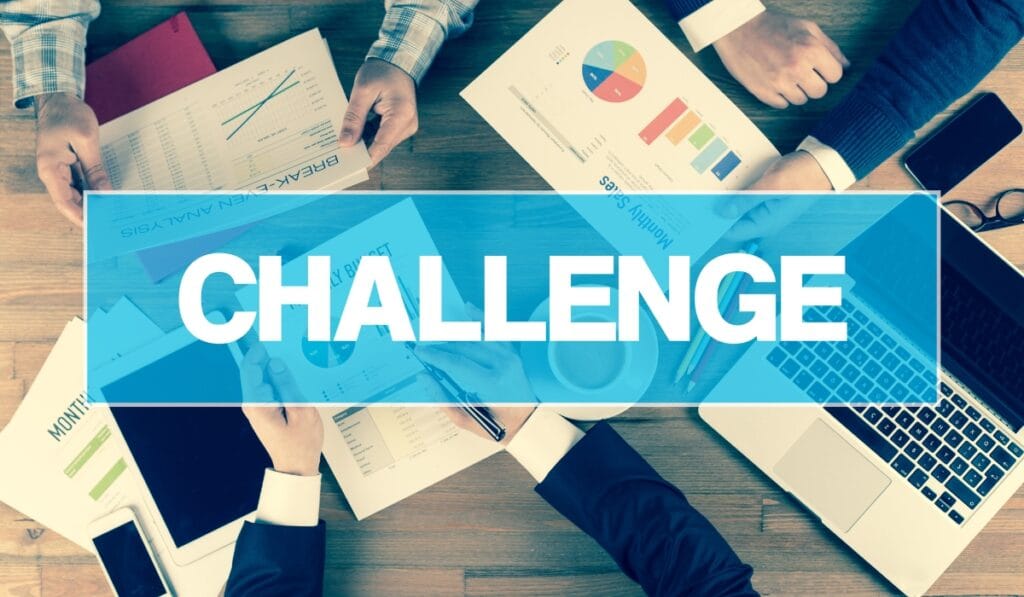Graphic design, as it is known, is an art form and a science. Designers combine visual elements to create stories, convey messages, or stir emotions. However, even the most talented designers have challenges ranging from technical hurdles to creative difficulties. They can disrupt the flow of work, cause delays in projects, and affect the final outcome. Recognizing these problems and knowing how to overcome them could change the way your job is done, regardless of whether you’re just beginning your journey into the industry or a seasoned professional. This article delved into a few of the most frequent problems with graphic design or Graphic Design Challenges that you may encounter and offers practical tips that will help you get over these challenges.

What are the most common elements of creativity in graphic design?
The creative block is a designer’s nightmare. There’s an empty canvas. Regardless of what you do your best, ideas don’t appear. It could be due to many reasons, including burnout, overthinking or the pressure of meeting strict deadlines. How do you get over this?
Begin by taking a break from the task for a short time. An hour of walking, a new creative project or an informal brainstorming session with a friend can generate the idea of a new direction. Another suggestion is to revisit ideas sources: Pinterest boards, art exhibits, and designs from industry leaders will spark your imagination. Be aware that the ability to create isn’t something you make happen; it is best when given the opportunity to blossom.
How can you effectively manage your time in the face of tight deadlines?
Designers frequently have multiple tasks which have deadlines that are not in sync. Effectively managing time is essential for tackling this problem. Make sure to break each project into smaller, more manageable pieces and then create a timetable to finish each. Software such as Trello or Monday.com will help you remain organised, and prioritizing important activities ensures you’re focus only on the things that matter most.
As often as possible, you should communicate with the stakeholders or clients to establish reasonable expectations. If you feel a deadline is too difficult to manage It’s best to discuss the issue in advance rather than risking the quality of work.
What do you need to consider when dealing with client feedback?
Uncertain feedback could lead to anger and multiple changes, slowing the process. The phrases “Make it pop” or “I want it to feel modern” may cause you to rethink your plan. For this reason, you should seek clarification. Example:
- “Could you share some examples of designs you consider modern?”
- “What specific elements would you like to stand out more?”
Giving clients mock-ups or a style guideline will also assist in coordinating expectations. Maintaining clear communication throughout the design process can help avoid the chance of miscommunication.
What can you do to ensure that your designs work on multiple platforms?
Since businesses are more and more dependent on multichannel marketing, your design needs to be compatible with a range of platforms such as websites, social media sites printing materials, mobile applications. That’s where the flexibility is essential.
Create your designs using scalability as a primary consideration. Utilize vector graphics to facilitate changing sizes and then test your designs on multiple platforms in order to spot the inconsistencies quickly. The typefaces you choose, the aspect ratios and size of files should be in line to the specific needs of each platform. In the case of Instagram, for example, a design meant to be used on Instagram is likely to have drastically different requirements than an advertisement for a billboard.
What are the skills required to use the latest design technology?
The world of digital design is ever-changing by the introduction of new applications and tools emerging often. Being stagnant isn’t an alternative. However, how can you keep going?
Each month, dedicate time to studying. Platforms such as Konsolve and Canva tutorials can guide you through the basic steps of the design platform. Software programs like Adobe XD, Figma, or Affinity Designer now play a crucial role in contemporary processes for graphic designers. Understanding the basics of wireframing and prototyping could distinguish your work from others.
Be aware that the design and development skills go beyond the digital world. Pay attention to the user experience (UX) and sustainability in design, as well as accessibility is equally important in your continuing training.
How do designers stay original amid a world of continuous influences?
With billions of design ideas posted every single day, standing out and not being copied by others is an ongoing task. Create original works:
- Make sure you conduct research. Learn about the audience, your brand and the goals of the design.
- Get inspired by any other work of design. Nature, architecture, as well as historical events are all great sources to come up with innovative thoughts.
- Be confident in your style as a graphic designer. Fashions change, but a brand’s voice will last forever.
When referencing other works, take them as inspiration, not sketches for your design.
What can you do to make collaboration more seamless between graphic designers as well as other teams?
Graphic design isn’t an individual undertaking. There are times when you be working with developers, marketers or even photographers. Yet, an ineffective communication system or siloed strategies can affect efficiency.
Utilize tools to streamline group work. For example, Figma to collaborate on design as well as Slack for updates in real-time. Set up clear workflows and share timeframes so that everyone is at the same level. In the end, be willing to hear other opinions and voice your opinion on designs when you need to.
How does the management of files contribute to overcoming technical hurdles?
Unorganized file management may cause inefficiencies, such as losing files, incorrect formatting, or even accidental overwrites. By implementing file name conventions and placing assets into specific folders can save you (and your entire team) considerable headaches.
In particular, make sure you prepare the final files in multiple formats.PDFs are for printed assets and optimized for web use.JPEGs or.PNGs to be used digitally.
How can you determine the design’s effectiveness after project completion?
Graphic designers’ work isn’t over once you’ve submitted the final version of their design. Evaluation of its effects helps you improve your abilities and identify the areas to improve. Metrics like the number of clicks to a website’s digital banners or reviews of printing designs provide important insight.
Do you ask yourself:
- Was the design able to fulfil the purpose for which it was designed?
- What would have been the best way to improve the process?
Each new design is an opportunity for growth as an individual designer.
Helpful information on graphic design problems
What is the best software for beginning users to use when designing graphics?
If you’re new at designing, start with simple tools such as Canva. After you’ve become comfortable, move on to more sophisticated software such as Adobe Illustrator, Photoshop, or Figma.
How can I deal with pricing disagreements with customers?
Transparency is essential. Give a clear description of the services that are that are included in your price. The offering of standard contracts or packages upfront can prevent disputes.
Do I have the ability to design with no formal education in graphic design?
Yes! Many successful designers have been self-taught. What is most important is your desire to continue learning, build your portfolio, and constantly improve your skills.
What is the importance of certificates for freelance graphic designers?
Although they aren’t mandatory, obtaining certifications for tools such as Adobe Creative Cloud can boost the credibility of your business, particularly when you pitch at agencies or clients.
What can I do to promote myself as a graphic artist effectively?
Establish a robust online presence with an online portfolio and social media platforms such as Instagram and Behance. Showing your work regularly increases trust and draws new clients.
Master Your Design Challenges
Graphic design challenges can be expected, but they are solvable if you employ an appropriate approach and mentality. Learning new techniques to work effectively together, each challenge is a chance to expand.
Do you need professional tools to simplify your process? Take a look at Konsolve’s extensive solution for graphic artists and enhance your work.






